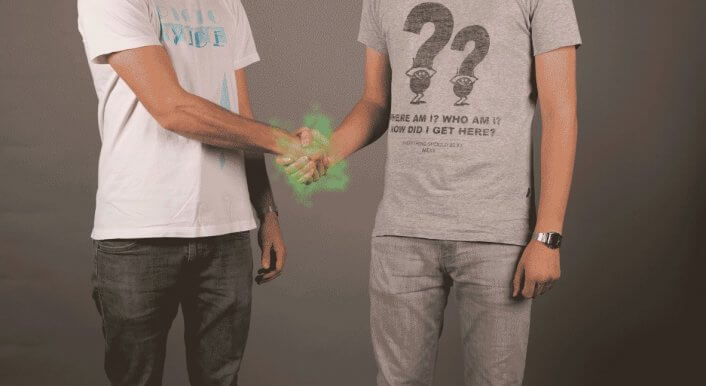Treasures straight out of our nose
In the nose of all places, where resistant MRSA-bacteria are likely to be found, the researcher Andreas Peschel and his team have discovered an antibiotic that kills MRSA-bacteria.

It is a lucky strike and a chance find. „We did not look for it“, Peschel says. He is a bacteriologist at the University of Tübingen and explores the relations between bacteria and their environment. The environment, in this case, is: man’s nose. For bacteriologists, the nose is a mysterious place in manifold ways. For example, because about 30 percent of humans have got staphylococcus aureus bacteria in their noses and about 70 percent do not have them. S. Aureus are not actually dangerous. For people with a weakened immune system, however, they can be. They can lead to complications then and in their resistant form they are becoming MRSA, the notorious hospital germ.
Why do some people carry the germ, and others do not? „Nobody knows“, Peschel says. His team hence swarmed all over the University of Tübingen and started collecting smears and snot samples. What they found were not only various bacteria but also an astonishing connection: In those noses where the scientists found a bacterium called S. Lugdunensis they did not find its dreaded cousin, S. Aureus, as often. The reason: The first one produces a substance that kills the latter, an antibiotic the scientists called Lugdunin.
Not only is the place where the scientists found the substance unique – Until now antibiotics had been obtained from soil bacteria only – but also the structure of the new substance: It is a completely new chemical class of antibiotics. There are no known resistances against it. Lugdunin killed all MRSA strains without any problems.
For Peschel, the human nose is a gold mine where more treasures are to be found. He says that he had found references hinting at more antibiotics in the nose, details will be published soon. As Peschel explains, the nose is very special, simply because it is a very hostile environment for bacteria. There are hardly any nutrients and it is in a permanent state of flux. Those microorganisms trying to survive in the nose thus fall back on chemical tricks in order to combat rivals. One strategy: Producing antibiotics to kill other bacteria. Peschels is convinced that similar bacteria can be found within other areas of the body. According to the scientist, humans have long been underestimated as a collection point for new drugs.
Holger Rohde, who is a professor for medical microbiology at the university clinic of Hamburg-Eppendorf is convinced that the discovery of new active principles has an „enormous importance“. As Rohde thinks, the molecule could be „a starting point for further development of antimicrobial substances“. He notes, though: „On the basis of the current knowledge, however, it is not sure whether Lugdunin succeeds in making the long way to clinical use.“
Why did not anybody besides Peschel have the idea of looking for an antibiotic that has been right before (or in) our nose all the time? „Simply because no one asked this question“, Peschel says. As he explains, the nose is a blind spot in the field of microbiology. Bacteriologists would prefer looking for new bacteria in caves and in the forest to looking for them in the human body. And medical microbiologists, in turn, are not interested in healthy humans.
In other words: „One half does not dare to, and the other does not understand“. A bacteriologist who is working with humans? According to Peschel, this species is still rare. Biologists would consider him a traitor, physicians would not regard him as equal. For Peschel, this is a fundamental problem: „There are way too many blinkers in science.“



